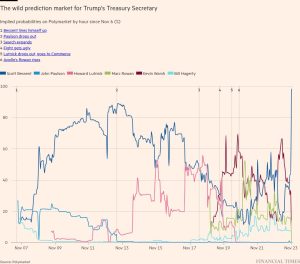The boom in home schooling
Even before the school day started, there was a problem: the uniform was scratchy. Once inside the building of her secondary school, the overload of noise and smells became overwhelming for Anna, who has autism. “She was anxious,” says her mother, Sophie, from south-east England.
Despite small class sizes and the support of a teaching assistant, Anna also struggled to engage with lessons at her fee-paying school. Her attendance dwindled until one day she experienced “a full breakdown”, according to her mother. “We decided enough was enough,” says Sophie, who asked to withhold their real names.
So last September, Anna started Year 9 at Minerva’s Virtual Academy, an online independent school based in the UK that has pupils from around the world and charges £8,410 a year. From the comfort of her home, and dressed in her own clothes, Anna began to thrive. She now has 100 per cent attendance and is doing well academically. It was a “lifeline”, says Sophie.
Anna’s experience is reflective of a growing number of children worldwide who are leaving formal education to learn from home.
Partially driving the shift, according to some education experts, is the inability of traditional schools — whether state-funded or fee-paying — to support children struggling with their mental health, particularly after the pandemic, or those with special educational needs and disabilities (Send).
These factors, combined with the greater scope for online learning and, in some cases, an ideological rejection of mainstream education, are fuelling the development of a rapidly expanding educational tech sector — one that views the traditional school system as inflexible and, like the working world, in need of modernisation. In 2023, the size of the global education technology market, which includes learning apps and online tutoring, was estimated at $142bn, according to Grand View Research, it is expected to grow at a compound annual growth rate of 13.6 per cent to 2030.
But some education experts warn that the rising popularity of home schooling, whether led by parents or through online learning, comes with risks, from the quality of lessons to concerns about safety and inequality. The trend has caught the attention of international organisations such as Unesco, which is examining any human rights implications it raises.
In England, the number of children being home schooled jumped from 80,900 in 2022 to 92,000 a year later, according to the Department for Education. A new measure, children missing education, shows there were 117,100 young people in 2022-23 who were not on a school register or whose home education was deemed “unsuitable” — up from 94,900 in 2021-22.
A recent report by The Difference, a children’s charity, and the Institute for Public Policy Research think-tank identified that a rising number of young people were leaving mainstream settings due to a breakdown in relations between families and schools.
$142bnSize of the global education technology market last year
Often, the decision to home school is an act of desperation rather than a choice, says Anne Longfield, a former UK children’s commissioner who is now executive chair of the Centre for Young Lives think-tank. “In my view . . . [only about] 20 per cent of parents are doing it for a positive principle,” she adds. “Too many children are going into home education that is anything but ‘elected’ and more a result of not receiving the right support for special educational needs or mental health problems.”
Fears over children dropping off the radar have prompted the UK government’s children’s wellbeing bill to include a register for local authorities to track children not in school and take responsibility for supporting home educators.
The situation in the US is different, where, owing to parent choice and religious views, home schooling has a long tradition. But recent data from the Institute of Education Sciences shows there has also been a jump in the number of US school-aged children who were home schooled from 3.7 per cent in 2018-19 to 5.2 per cent in 2022-23.
A rise in polarised beliefs and a suspicion of state schools’ ethos, including hostilities about lessons encouraging diversity and openness about sexuality, has intensified the trend. Then there are fears over safety, especially because of school shootings in the US. “The environment” of mainstream schools was cited by parents as the biggest turn-off, the report said.

US state and federal government also provide funding that allows parents more flexibility in how their children are educated. All of this amounts to a switch from publicly funded schools to new alternatives, including so-called microschools — small, personalised settings — and community schools.
UK-based Minerva now has around 1,000 pupils and its revenues have grown from £500,000 in the financial year ending 2022 to £4mn in 2024.
Hugh Viney, Minerva’s chief executive, says businesses like his are “an antidote to the antiquated, one-size-fits-all education sector that . . . I had seen so many young people struggle with”.
The rise in home schooling, its advocates argue, suggests traditional schools are no longer suitable for all children and young people.
Many experts say it is a byproduct of struggles to cope with a deepening crisis in young people’s mental health. On top of that, the special educational needs system “isn’t working for the majority of children”, says Ellie Harris, head of campaigns at The Difference. Some “parents don’t trust that the secondary school can meet their children’s needs”.
The pandemic was also a turning point because lockdowns allowed parents to get a closer look at what and how their children learn. While most parents were grateful for schools reopening, others were left disillusioned with what they felt was a rigid system too focused on targets.
“Parents [have] seen inside the black box of school, and some really worried about the lack of engaging, interactive teaching and learning they saw — that’s partly unfair to teachers, who were also teaching in a new medium online for the first time,” says Rebecca Winthrop, director of the Center for Universal Education at the Brookings Institution in the US and author of a forthcoming book on student engagement.
Private online educators say they are stepping in to meet the demands of unhappy parents and children. Home school can create “a much more individual path of learning”, says Anthony Salcito, chief institution business officer at Nerdy, a US-listed company providing online tutoring.
Alongside evolving technology that can personalise curriculums and support students and teachers alike, in the US vouchers provided by some states and federal funding through the Every Student Succeeds Act (ESSA) further stimulate demand, allowing parents greater control and influence over where their children study.
Seizing a growing market opportunity, education providers have enhanced their offerings. In central London, not far from The Ritz hotel, is the London Park School Mayfair, which is participating in an educational experiment by its owner Dukes Education.
Pupils at the private day school are joined by a small group pursuing a so-called hybrid curriculum. Those students spend four days a week studying online from home, attend lessons in person one day a week and have access to after-school clubs.
Based in the same building is Ambreen Baig, director of hybrid schools at Dukes Education, who believes discussions over school versus home learning are too binary. Dukes’ hybrid pupils, who are not classified as home learners, include professional athletes, previously home schooled students, students who enjoyed online learning during lockdown and those with acute absences because of poor mental health or issues with their physical health.
The fees — almost £17,000 a year from January — are lower than those for full-time pupils at other schools in the same group, but still out of reach for most families.
Results are promising. Over the past four years, 120 students have stayed until the end of their GCSE exams and 20 of them returned to full-time day school. “They now feel safe. They can academically thrive,” says Baig, although she acknowledges that their students have tended to be “quite independent in their learning and they do want to do well”.


She believes social interaction and some time in a school environment is important. “We could have had 700 [purely online students] by now and just had a much easier life. [Timetabling hybrid is] complicated.”
Baig says Duke’s learning environment provides “a transition” for some to return to full-time school. Others prefer to stick to the new model, seeing it as a preparation for higher education that encourages independent study and the hybrid world of work.
Downstairs in a break room is Annabel, a Year 8 pupil who says she was “really stressed” at her old school. “It was really loud. They cared about your grades but didn’t actually care about you enjoying lessons. This school is way better,” she adds.
Annabel enjoys the hybrid system. “If you get to stay at home and rest a bit and be with familiar surroundings, then it’s way easier to concentrate,” she says, but she also values the day of in-person teaching “so you get to see people in real life”.
Yet the expanding appetite for home school brings with it concerns about safeguarding and the standard of the education provided.
“Quality ranges from exemplary to absolute neglect and abuse,” says Robert Kunzman, managing director of the US-based International Center for Home Education Research. “Home school [is the] only place where a child could possibly never have contact outside family, [which is an] abuse risk.”
Local authorities do not “necessarily have contact with children” once they leave mainstream schools, says Longfield, the former children’s commissioner. “We don’t know if they’re getting educated.”
In the US, the Coalition for Responsible Home Education has documented nearly 200 cases of homeschooled children who have died since 2000, the majority “suffering ongoing maltreatment for months or years”.
“We believe home schooling can be incredibly beneficial for legitimate reasons such as discrimination and disability. But overall, it is regulated differently in each state, and we don’t believe any state holds parents accountable,” says Angela Grimberg, the coalition’s executive director.

She points to the lack of requirements for US states to maintain a register of home schooled children, conduct home visits or require an independent “mandated reporter” to check on potential abuse. Parents suspected of abuse even have the right to withdraw their children from schools, increasing the risk of maltreatment, Grimberg adds.
Greater isolation carries other risks, particularly in an increasingly polarised world, some experts say. In an article, published in 2020, that triggered a backlash from defenders of home schooling in the US, Elizabeth Bartholet, an emeritus professor at Harvard Law School, warned that many parents choose to home school precisely because “they want to isolate their children from ideas and values central to our democracy”.
“Many promote racial segregation and female subservience. Many question science,” Bartholet wrote. Many are “determined to keep their children from exposure to views that might enable autonomous choice about their future lives”.
Other experts worry about the consequences for socialisation of children spending more time learning at home.
Parents say this can be mitigated. Anna, the Minerva pupil, meets her peers online as well as on occasional school trips. She also spends time at a group for girls with autism. Her mother Sophie is satisfied: “In some ways, loneliness is worse if you are in a school and no one is talking to you.”
The other concern among those who want more regulation in home schooling is quality of education. Grimberg, of the Coalition for Responsible Home Education, learnt at home until she went to secondary school because of her mother’s concern about safety in mainstream institutions. But, she adds, “my education fell to the wayside. We were not given resources we needed.”
Whether children perform better in home school compared to mainstream facilities is subjective and the data on outcomes is patchy.
“It’s not as evidenced as it could be — it’s a political and emotionally charged area,” says Amber Fensham-Smith, senior lecturer in childhood and youth studies at the Open University.
Reasons for the information gap are nuanced. For a start, there is a resistance to formal assessments from some home educators, for whom the concept of testing children is at odds with their beliefs.
“The whole point of home education is it is home education; it is not school,” noted Wendy Charles-Warner, co-chair of Education Otherwise, a charity that supports home schooling in England and Wales, in a select committee report.
From an academic point of view, it can be hard to compare outcomes, says Fensham-Smith. “It depends on age and needs of children. A 15-year-old who has had several years at school is different to starting them off from scratch. [We] need to understand the impact of home education across the whole life,” she adds.
Home schooling provision is also disparate, adds Fensham-Smith. “There’re a lot of inequalities in home education. It’s very diverse and complex.”
Longfield, of the Centre for Young Lives, agrees — particularly because children from lower-income families are more likely to have special educational needs or experience poor mental health and, therefore, face greater challenges in mainstream school.
Some parents she has encountered did not have the “capacity to challenge the school or work with the school” once their child started experiencing difficulties. “And when they took the children out of school they [did not have] the educational capacity to teach their children. That compounds what’s already a huge disadvantage,” she adds.

Once these children are out of the formal school system there is little help available to them. “Some thought that if they took their child off the register they would get support from the local authority,” says Longfield, and “it was a shock that it didn’t come through”.
This is where inequality can become more heightened. “The most disadvantaged children are most disadvantaged again through lost learning,” says Harris, from The Difference. “The private sector stepping in might be right for [a more affluent] child. But others are left without state provision that can meet their needs.”
Longfield, the former children’s commissioner, wants efforts directed at keeping children within traditional schools. “We have to get to a point when the mainstream school is for most children,” she says.
She hopes the UK government will create “a much more inclusive education system . . . That must include a system that rewards inclusion, boosts Send and children’s mental health provision, and supports schools to ensure every child, whatever their needs, receives a good education.”
But Viney, Minerva’s chief executive, says he wants government and local authorities to recognise that online home education has a role to play in tackling “rising levels of persistent absenteeism and school refusal”.
“We need those in power to stop viewing it as merely a stop gap.”
Data visualisation by Amy Borrett
#boom #home #schooling







